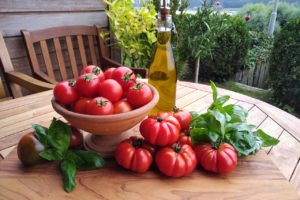
sabine825 / Pixabay
People are becoming food conscious these days. Most people are not always satisfied with store-bought produce. In fact, some would really take the time to look at the labels to see if it’s an organic cabbage. This is only natural, of course. Agriculture has been input intensive in the past decades. Pesticides, fertilizer, and machinery are all used in order to “make” the vegetables we have today. This, in turn, drives people to speculate on their own safety. Just think about it, would people have the guts to eat a pesticide-laden eggplant? Of course not. Hence, some are resorting to making gardens in their homes and growing their own food.
One big advantage of having a garden which is primarily meant for food would be that you have full control over how the produce is grown. There will be no more worries on pesticides or fertilizers since everything is grown relatively organic, depending on how the garden is tended to.
It is quite easy to start a do it yourself garden; in fact, the International Institute of Rural Reconstruction has a certain method for growing food organically, one that can give a head start for many aspiring food gardeners. It is called bio-intensive gardening.
In bio-intensive gardening, there is a focus on the use of composts. Generally, a compost is decomposed organic material mixed with soil. With composts, plants are able to grow faster without the use of inorganic fertilizers such as 14-14-14 or urea. Although composts are not as effective as inorganic fertilizers, they are more “greener” than inorganic fertilizers. Thus, a compost is a central part of a garden.
To begin making a do it yourself garden, an adequate space of land must be available. A space that measures 50 square meters is enough for minimal organic food needs, but for greater demands a larger land is necessary. Then, the compost must be prepared. A mix of organic materials—like chopped vegetable tops and manure– and soil is enough to make a compost.
The compost must be mixed once each day until the materials fully decompose at about 14 days; this approximate changes depending on the organic material used. When it is done, the compost is applied then raised beds are made by covering the compost with soil. Planting can then proceed. Make sure to put stakes on the planting spots to avoid mistaking the seedling as a weed.
After that, the seedlings need tender, loving care as they grow. Remember to water them every day in the morning. After all the hard work, food gardeners are rewarded with a bountiful harvest of organic vegetables. From seed to plant, starting a do-it-yourself garden is really a rewarding experience. Something that, in today’s modern society, is a truly beneficial hobby.